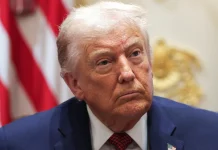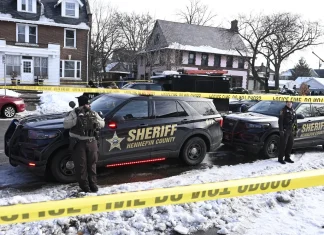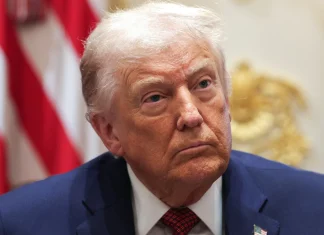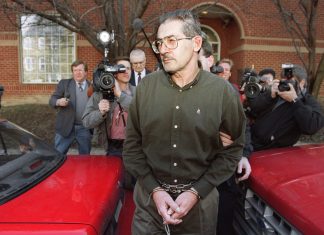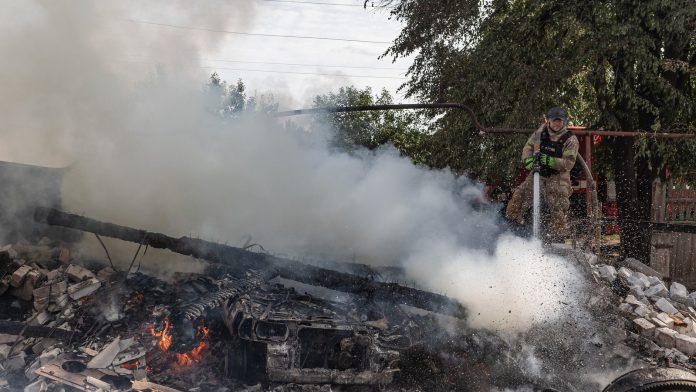
On the Brink of Peace or Deeper Discord? The High-Stakes Drama Unfolding Over Ukraine’s Future
Imagine a room thick with tension and possibility: world leaders, diplomats, military strategists, and those bearing the scars of a brutal war, all gathered under one roof in the English countryside.
The air hums with cautious hope and steely resolve as they grapple with a question staining every conversation — can this long, devastating conflict ending echo through the corridors of power rather than the battlefields of Ukraine?
In early August 2024, an unexpected spark of diplomacy ignited when former U.S. President Donald Trump announced plans to meet Russian President Vladimir Putin in Alaska. Their intended summit, slated for August 15, promises to be the most consequential meeting between sitting (and former) American and Russian leaders since Joe Biden sat down with Putin in 2021.
The goal? To explore an elusive peace deal that might, just might, end the war in Ukraine — a conflict that has carved deep wounds across Europe and the world for over three and a half years.
Shifting Sands: A Terrifying Proposal Emerges
Trump’s proposed peace deal is shrouded in mystery, but key fragments have seeped through the diplomatic veil. His vision reportedly includes a “swapping of territories” — a phrase as loaded and contentious as it sounds. This implication, that Ukraine may have to cede parts of its sovereign land to Russia, triggers profound unease among Kyiv and its steadfast European allies. “Ceding territory amidst active combat is like surrendering your very soul while still holding a gun,” French President Emmanuel Macron insisted in a recent interview. “Ukraine’s future cannot be decided without Ukraine.”
In response, Ukraine’s President Volodymyr Zelensky has stood firm. “Ukrainians will not give their land to the occupier,” he declared in a somber evening address, his voice carrying the weight of a nation’s defiance. His words blend pain and pride, echoing through Kyiv’s streets where hundreds of small blue-and-yellow flags flutter in memory of those who paid the ultimate price.
Chevening House: Where East Meets West in Negotiation
Amid this high-stakes backdrop, Chevening House — a stately mansion nestled in the English countryside southeast of London — hosted a critical summit. U.S. Vice President JD Vance met with British Foreign Secretary David Lammy and representatives from Ukraine and various European nations. The room bristled with urgency, determination, and, above all, a shared hope to chart a diplomatic path forward.
In a joint statement, the leaders of France, Italy, Germany, Poland, the UK, Finland, and the president of the European Commission expressed cautious optimism about Trump’s initiative. They applauded the move but underscored the imperative to align any peace process with “Ukraine’s and Europe’s vital security interests” — notably, the inviolability of international borders and the necessity of credible guarantees for Ukraine’s sovereignty.
“The path to peace cannot be decided without Ukraine,” their statement insisted, pushing back with firm resolve against any proposal that would carve Ukraine up or normalize territorial conquest by force. A senior European official, speaking off the record, confirmed the presentation of a counterproposal that demands a ceasefire precede any territory swaps, and that any exchanges be reciprocal, backed by solid security guarantees.
The Human Landscape: Lives Etched in Conflict
Beyond grand treaties and geopolitical chess games, this conflict is lived daily by millions. In Kyiv’s central square, Olesia Petritska, a middle-aged woman mourning her fallen comrades, quietly gestures toward hundreds of flags fluttering in the breeze. “Not a single soldier will agree to pulling back or giving up land,” she says with solemn conviction. “This is their home. This is our home.”
The war rages relentlessly along a vast 1,000-kilometer front line cutting through eastern and southern Ukraine. Russian troops control roughly 20% of Ukraine’s territory, with fighting that ebbs and flows in intensity. Kremlin forces have advanced slowly but have yet to secure decisive victories — a testament to Ukrainian resilience and the brutal stalemate that grips the region.
“This is not just a struggle over land,” explains Tatiana Stanovaya, senior fellow at the Carnegie Russia Eurasia Center. “It’s a battle for the very idea of sovereignty, the right of a nation to decide its own destiny. The peace advances we see now are, perhaps, the most realistic yet — but they come with huge risks, especially for Ukraine.”
What’s at Stake? Beyond Borders and Bullets
To grasp the enormity of what’s unfolding, consider: Russia annexed Crimea in 2014, an act widely condemned as illegal and a blatant breach of international law. Since February 2022, Putin’s invasion jolted the world, rekindling fears of imperial aggression fueled by geopolitical ambitions. The four Ukrainian regions claimed by Russia — Luhansk, Donetsk, Zaporizhzhia, and Kherson — remain battlegrounds, with Kyiv controlling pockets deep within these contested territories.
For Europe, this conflict is no abstract dispute. It strikes at the heart of the post-World War II order — a fragile framework premised on respect for borders and the rule of law. French President Macron encapsulated this neatly: “Europeans are not mere spectators; our own security is at stake. Peace in Ukraine translates to peace in Europe.”
But peace built on shaky compromises could destabilize the region forever. What message would it send if warlords could redraw borders at will? This is not merely a Ukrainian tragedy; it’s a test of international resolve.
The Road Ahead: Hope or Hazard?
As Trump and Putin prepare to meet in Alaska, one must ask — will they broker the beginning of peace or risk deepening wounds? Will Ukraine’s voice echo within those summit rooms, or be drowned out by the titans of power making deals over a country’s sovereignty?
President Zelensky’s cautious outreach in recent days — engaging with allies across Europe and the U.S. — highlights the delicate balancing act ahead. Early reports suggest the possibility that Zelensky might be invited to join the Alaska talks, a sign that inclusion could be on the table.
Yet many remain skeptical. “Diplomacy in war is like walking on a knife’s edge,” notes political analyst Ivan Petrov. “One wrong step can ignite renewed conflict. But without dialogue, the war grinds on — devouring lives and futures.”
Reflecting on Lessons
For the global citizen watching from afar, it’s a moment to reflect on the cost of conflict and the arduous journey toward peace. How often have histories been rewritten at summits, only to be shattered by bullets and mistrust? What does sovereignty mean in a world marked by competing powers and shifting alliances?
Amid it all, the people of Ukraine hold a stubborn flame of hope and defiance, their daily lives a testament to resilience in the face of overwhelming odds.
So, as you ponder this complex, unfolding story, ask yourself — what does peace truly require? Is it simply an absence of war? Or is it the hard work of justice, security, and recognition? Can a durable peace in Ukraine—and, by extension, Europe—be stitched together by pragmatism, trust, and respect? The coming weeks may tell us much not just about a region’s fate, but about the future of global diplomacy itself.



